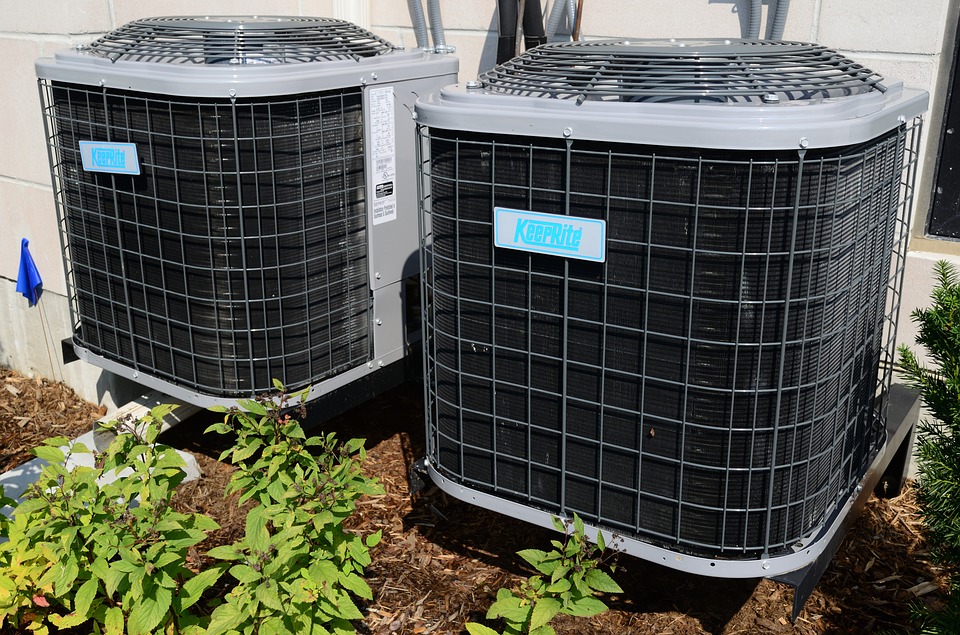How To Prevent Bugs From Coming Through Air Conditioner Vents?
If you’ve ever spotted a bug crawling near your air vents and wondered how it got there, you’re not alone. Air conditioners, whether central systems or window units, can unintentionally act as doorways for insects. This guide breaks down how and why bugs get in, which ones to watch out for, and what you can do to keep your HVAC system pest-free.
Contents
Can Bugs Come Through Air Conditioner Vents?
Yes, and not just by accident. Bugs can intentionally enter through AC vents because these systems often connect your home’s interior to the outdoors via ductwork, wall gaps, or condensation lines. Think of your HVAC system like a hidden highway: any point that isn’t properly sealed becomes a potential on-ramp for insects.
Even if the vent has a cover, bugs can still get in from behind, crawling in through the attic, basement, or outdoor unit and making their way through the ductwork. Tiny invaders like ants or spiders squeeze through the smallest cracks, while larger pests like wasps can exploit disconnected or damaged ducts. This is why installing an air conditioner bug screen can make a big difference in keeping out bugs in air conditioner systems.
But the real issue isn’t just the vent. It’s the HVAC system’s invisible invitations. Most bugs don’t just crawl in like burglars, they follow airflow, temperature shifts, and chemical signals. Ducts create microclimates inside your walls. For a bug, that’s like stepping into a warm subway tunnel on a cold day.
What really draws them in is the combination of pressure changes that suck them in when doors slam or systems activate, pheromone trails from ants or roaches that get trapped inside return ducts, and unbalanced airflow that disturbs how vents push or pull air, creating backdrafts bugs can follow.
So yes, bugs do get in through vents, but not always by crawling. Often, it’s the air itself that brings them in.
Can Bugs Come In Through Window Air Conditioner?
Window AC units are notorious weak points when it comes to bug entry. They’re like the Swiss cheese of climate control: full of gaps around the frame, in the accordion side panels, and even inside the unit where components don’t fully seal off airflow.
Around the unit, the sides, top, and bottom often aren’t flush with the window frame. Bugs in air conditioner systems like these can climb in through the condensate drain port, or squeeze through interior vents if the filter isn’t snug or the casing is loose. You might not even notice until ants show up on your windowsill or gnats appear mysteriously near the unit.
Window ACs are like summer rentals, temporary, low-security, and everyone knows they’re easy to crash. What really sets them apart is that they’re built for convenience, not for keeping anything out. It’s not just that air conditioner bugs come through gaps, they can live inside these units if left unchecked.
Spiders lay eggs in dead zones behind filters. Cockroaches nest in insulation foam, especially if the unit has been sitting idle. Drain flies thrive in stale water trapped in unused condensate trays. If your unit hasn’t been cleaned in over a year, you may not just have a bug problem, you may have a bug colony.
What Draws Bugs to Your Air Conditioner?
Air conditioners offer the insect equivalent of a five-star resort. Dripping condensate or lingering humidity draws in thirsty bugs like silverfish, roaches, and ants, while the shaded, enclosed structure of ducts or window units feels safe and predator-free. Add in the consistent airflow, which mimics natural breezes that moths or flying beetles instinctively explore, and the occasional food scent pulled in from kitchens or trash areas, and you’ve got a setup that checks every box on the “ideal bug habitat” checklist.
But it’s not just about moisture or darkness. Bugs air conditioner systems attract are responding to what the AC signals: shelter, water, and opportunity. Many use air currents to navigate and find food, moths, for example, follow pheromones, and your AC can unintentionally guide them. When airflow moves over drains, trash bins, or pet food, it carries scent trails further than you’d expect, disrupting insect scent maps and spreading attractive smells like a candlewick disperses fragrance.
Basically, your air conditioner may be doing more than cooling the room, it’s also advertising free buffet and safe housing.
Common Bugs in Air Conditioners
Here’s a breakdown of the usual suspects, and what makes them love your AC. Ants, especially odorous house ants and carpenter ants, are masters at finding microscopic cracks and often nest near condensation lines. Spiders tend to follow, drawn by the smaller bugs they hunt. If one spider appears near a vent, more are likely to follow. Cockroaches are another common offender, thriving in moist, dark places like drain pans or unsealed ductwork. Drain flies, also called moth flies, often sneak in through the condensate line or window unit drain holes. Wasps may nest near outdoor HVAC units and occasionally crawl in through flaps or gaps. And then there are mosquitoes and gnats, slipping in through poor seals around window units or ductless systems.
Rather than a generic bug list, think of this like a “wanted poster” for your HVAC:
The Scout, ants show up first, often on a mission, and if you spot one, you can assume many more are nearby.
The Stalker, spiders follow the trail of other bugs already inside.
The Squatter, cockroaches settle into neglected drip pans or insulation foam, often going unnoticed.
The Drifter, mosquitoes and gnats ride the airflow, slipping in during pressure changes or humid nights.
If you’re frequently seeing air conditioner bugs, that may be your sign to inspect ductwork and install an air conditioner bug screen over key vents or drains.
If these bugs keep coming back despite sealing efforts, it might be time to consult a pest control professional who can inspect hidden areas and treat infestations linked to your HVAC system.
How To Seal Window Air Conditioner From Bugs?
Here’s a bug-proofing method that’s far better than just stuffing in foam strips. Start by removing the accordion panels entirely (if possible) and replacing them with custom-cut foam board or Plexiglas, sealed tightly with weatherproof caulk. Seal both the inside and outside, a common mistake is only sealing the interior. You need to caulk any exterior gaps where the unit meets the window, especially along the bottom and sides where bugs in air conditioner setups tend to sneak through unnoticed.
Use high-density weatherstripping along all edges, and don’t forget the often-overlooked plug wire opening, tape or silicone works well there. For added protection, apply mesh screens over vent holes or drainage ports using waterproof adhesive or zip ties. In extreme cases, you might even build a bug screen box to enclose the external part of the unit without blocking airflow.
Done right, this not only keeps out bugs but also improves energy efficiency. So don’t just “use weatherstripping”, treat this like a mini home renovation hack. Think like a contractor: you’re not just sealing a window unit; you’re building a bug vault.
The goal is layered protection, like armor. Start with a compression fit of foam against the glass, then add reflective insulation board cut to fit the side panel spaces. Cover drain holes and fan vents with steel mesh or aluminum screening, then finish seams with exterior-grade caulk or HVAC foil tape. Around plug and power gaps, use silicone sealant.
And for a bonus move, sprinkle a thin barrier of diatomaceous earth along the windowsill, inside and out, a passive bug killer that stays effective for weeks.
Are Central ACs Safe from Bugs in Air Conditioner?
Yes, but in different ways, and knowing how makes all the difference. Central HVAC systems are vulnerable around the ductwork, outdoor unit, vents, and especially the condensate drain line, which often runs through a wall to the exterior. If that line is open or improperly sloped, it turns into a bugs air conditioner expressway. Meanwhile, ductless mini-splits are usually better sealed, but the line set, the tube connecting the indoor head to the outdoor unit, passes through a hole in the wall that’s often sealed with nothing more than expanding foam. That foam degrades over time, leaving gaps.
So yes, both systems can become targets. It’s not really about whether it’s central or ductless, it’s about the gaps left behind during installation or long-forgotten maintenance. And they’re not just vulnerable, they’re often worse because homeowners assume they’re sealed tight.
In central HVAC setups, ducts in attics or basements frequently disintegrate at the seams and go unchecked for years. Flexible ducting sags, collects condensation, and creates ideal micro-habitats. The condensate drains line remains open to the outdoors, and if you were bug-sized, you’d use it too.
Mini-splits have their own problems. Line set holes often rely on shrinking spray foam. If the indoor head isn’t flushed yearly, the drain pan can start harboring air conditioner bugs. Some models even have auto-opening vents, great for airflow, terrible for keeping pests out.
Pro tip: If your HVAC smells musty when it kicks on, that’s probably not just mold, it might be bug residue.
Stop Bugs: Air Conditioner Tips That Work
To go beyond basic sealing, these are battle-tested, proactive strategies that add layers of protection. Installing an air conditioner bug screen behind supply and return vent covers creates a physical barrier without blocking airflow. Using a bug-resistant caulk, especially those with essential oils like peppermint or citronella, adds natural repellent power at the seams. Keeping the AC filter and vents clean removes the dust and grime that bugs in air conditioner systems love, giving them no reason to linger.
Outside, treat the area around the unit by placing crushed gravel beneath and around it to reduce moisture and nesting appeal. At night, check for light leaks, if light shines through the install, so can bugs, so seal accordingly. Flush the condensate line monthly with vinegar to prevent buildup and gnat infestations. At the foundation level, use diatomaceous earth or ant gel around entry points and duct penetrations to create a passive defense.
This is where you ditch the vanilla tips and start thinking tactically. UV-light traps inside ducts can do more than fight mold, they also disorient flying insects. Wire mesh beneath the AC slab or condenser cage stops burrowing pests before they get close. A WiFi outlet switch on window units lets you power them off remotely if a seal breaks during a storm and insects rush in. An infrared thermometer can help detect hidden heat gaps around AC installs, useful since bugs air conditioner systems attract often follow temperature shifts as much as airflow. And don’t settle for routine servicing; schedule annual HVAC inspections focused specifically on pest entry, not just performance. For full protection, pair HVAC servicing with a seasonal pest control treatment to eliminate insects at the source before they find their way into vents or drain lines.
You’re not just bug-proofing anymore, you’re building an invisible wall of deterrents.





Oh wow this looks so handy to have, I need to tell my mother about this for her garden
I had no idea they got in through the AC. Ahh! This is useful to know, thank you so much!
I’ve totally had those sneaky little bugs show up and wondered how they got in! Never thought to check the vents. I like how doable the tips are—just sealing things up and adding mesh sounds less stressful than expected. Definitely bookmarking this for the next time summer bugs try to move in!
I wish I had found this post earlier. Been dealing with this bug thing for years now.
We just installed a new air conditioner last week because our old one died. Honestly I never thought about the bugs crawling in, but I’m going to show this article to my husband so he can address it.
Bugs are so ick. I hadn’t thought about the a/c being an attractor for them.
I never thought bugs could sneak in through AC vents! These are great tips to keep things bug-free and comfy, thanks for sharing ❤️.
I appreciate the practical tips about keeping the area around the outdoor unit clean and dry. I didn’t know moisture attracts bugs like that!
We almost always get wasps in the house after we’ve been on vacation. I always thought they were coming through the chimney, but now I’m wondering if it’s through the AC unit! I’ll have to have my husband check on this.
OMG, this is really useful. We all hate bugs with a passion in our household so having them come through the air con would be like a living horror movie. Checking for leaks and having a bug screen both make sense to help stop this!!!
I’ve been dealing with tiny bugs sneaking in through my AC vents, so the mesh screen tip was super helpful. Never thought to check for gaps around the unit either—good call.
I had no idea the sneaky little buggers could do this. I’m going to ask my hubby to try some of your tips out these weekend.
We have been having more insects like these in our house lately, and we had no idea where they were coming from. I guess not, it’s time to check those vents!
Oh, wow! I had no idea bugs could come through the vents like that. Time to put things on lockdown!
Yikes, I hate when this happens. I need to keep these tips in mind. It freaks me out when a bug goes skittering across the floor.
So it may sound silly but I never considered that a bug would come in through ac vents. I figured they got in because my husband and son like to keep doors open when they shouldn’t! But after reading your post, it makes sense as to why and how the bugs get in. I’ll have to try your tips on how to stop them from gaining access. Will keep you posted on how it all goes down!
Maureen | http://www.littlemisscasual.com
I’m definitely gonna start utilizing these tips. This is so useful, I can’t believe I almost missed out on it. Exactly what I needed to see today, thank you!